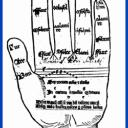Yahoo Answers is shutting down on May 4th, 2021 (Eastern Time) and beginning April 20th, 2021 (Eastern Time) the Yahoo Answers website will be in read-only mode. There will be no changes to other Yahoo properties or services, or your Yahoo account. You can find more information about the Yahoo Answers shutdown and how to download your data on this help page.
Trending News
Reading intervals on sheet music?
I play piano and when I read music, I can quickly identify the type of interval like 3rd, 5th etc, but not the quality, i.e. minor, diminished etc. I have to sit there and make sure there aren't any "hidden" extra half steps like between e&f, b&c and then I have to look at the key signature that might diminish or augment the interval again. It take me at least 10 seconds. How does one immediately take in all of it while playing?
Thanks!
2 Answers
- MamiankaLv 76 years ago
You learn to use both your ears AND your eyes. Some things in music are recognized by sight - C to F, - yeah, that's a P4 - and some by sound, within the key - I *hear* Eb to C in the key of Eb - yup, a major sixth - and I am LOOKING at it now - yup, nailed it. I taught solfege for many years, mainly to my vocal/choral students, and even the fine instrumentalists in my groups/classes said that they benefited by this. There are countless funny songs around the Net that serve as learning devices, are certain songs that students have used for decades, to help them remember a certain interval - Here Comes the Bride for an ascending fourth, Maria form E West Side Story for a tritone, etc. Within a reasonable amount of time and usage, you just *learn* them. Sit yourself down, and in a few different keys, go thru all the interval s built up from the tonic, working chromatically. Then start form notes OTHER than the tonic. Do-mi is a major third (we are assuming a major key, first) - but re-fa is minor. Work you way thru - but do not beat yourself up. Your eyes and ears need a rest. Do *some* every day - but not a lot. You will learn faster that way.m As much as my student know I value HARD work - they also know that SMART work is better.
- ?Lv 76 years ago
1. Look at the key signature before reading anything.
2. Check the preceding notes for accidentals and cancellations.
3. Name the interval.



